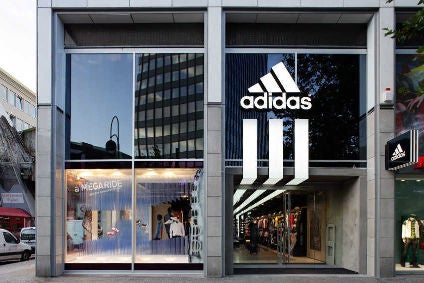
- Q1 currency-neutral revenues up 27%.
- In euro terms, revenues grew 20% to EUR5.27bn from EUR4.39bn in 2020.
- Gross margin increased 2.1 percentage points to 51.8% due to healthy inventory position.
- Net income from continuing operations surged to EUR502m, compared to EUR26m a year earlier.
Adidas’s sportswear specialism has driven an impressive rebound from the impacts of Covid-19, as consumers’ heightened interest in fitness and desire for comfortable apparel caused its revenue to increase by EUR887m to EUR5.27bn during Q1 FY2021.
Growth was particularly boosted by its operations in China, having been worst affected by the pandemic at the beginning of FY2020, with reported sales rising by 151.1% during the quarter. Despite ongoing lockdowns across its European markets, with over half of its estate in the region shuttered in March, its sales in EMEA still increased by 3.8%, owing to its continued relevance among these shoppers.
With the vaccine rollout continuing to progress globally, gyms and fitness classes reopening in many of its markets, and sporting events like UEFA Euro and Copa America starting in the coming months, its performance is now expected to gain momentum, with the company revising its full-year outlook for currency-neutral sales growth from a mid-teens to a high-teens rate.
Though footwear has been one of the worst-performing segments in the wider apparel industry, Adidas announced a 31% increase in the category’s currency-neutral revenues in Q1, as consumers opted for comfortable styles to wear day-to-day amid lockdown measures. While comfort will have been a key purchase driver among its clothing ranges too, the gradual easing of Covid-19 restrictions will cause demand to shift towards more going-out-appropriate styles.
Therefore, Adidas should highlight more of its fashionable streetwear items in the coming weeks, through social media and on its website homepage, to retain its appeal. Product innovations have also allowed the brand to maintain its desirability, with recent launches including shoes made from ocean plastic and a trainer composed of a mushroom leather alternative. These will particularly cater towards consumers’ rising concerns about the environment, helping it to better compete with some of its less sustainable rivals.
Amid Adidas’ push to grow its direct-to-consumer (DTC) operations, currency-neutral revenue via this channel rose by 31%, driven by online, which increased by a further 43%, despite having also recorded growth of 35% in Q1 FY2020.

US Tariffs are shifting - will you react or anticipate?
Don’t let policy changes catch you off guard. Stay proactive with real-time data and expert analysis.
By GlobalDataWith DTC now accounting for over one-third of Adidas’ total sales, not only has it helped the business to better mitigate the negative impacts of temporary store closures during Covid-19, but it will have also given Adidas greater control over its fulfilment and supply chain, making the shopping journey more enjoyable for customers.
Following Adidas’ divestiture of Reebok, which was launched at auction earlier this week, it will now be able to place even greater focus on its eponymous brand, with more streamlined investments in its DTC channels needed to further boost brand awareness and accessibility.”



